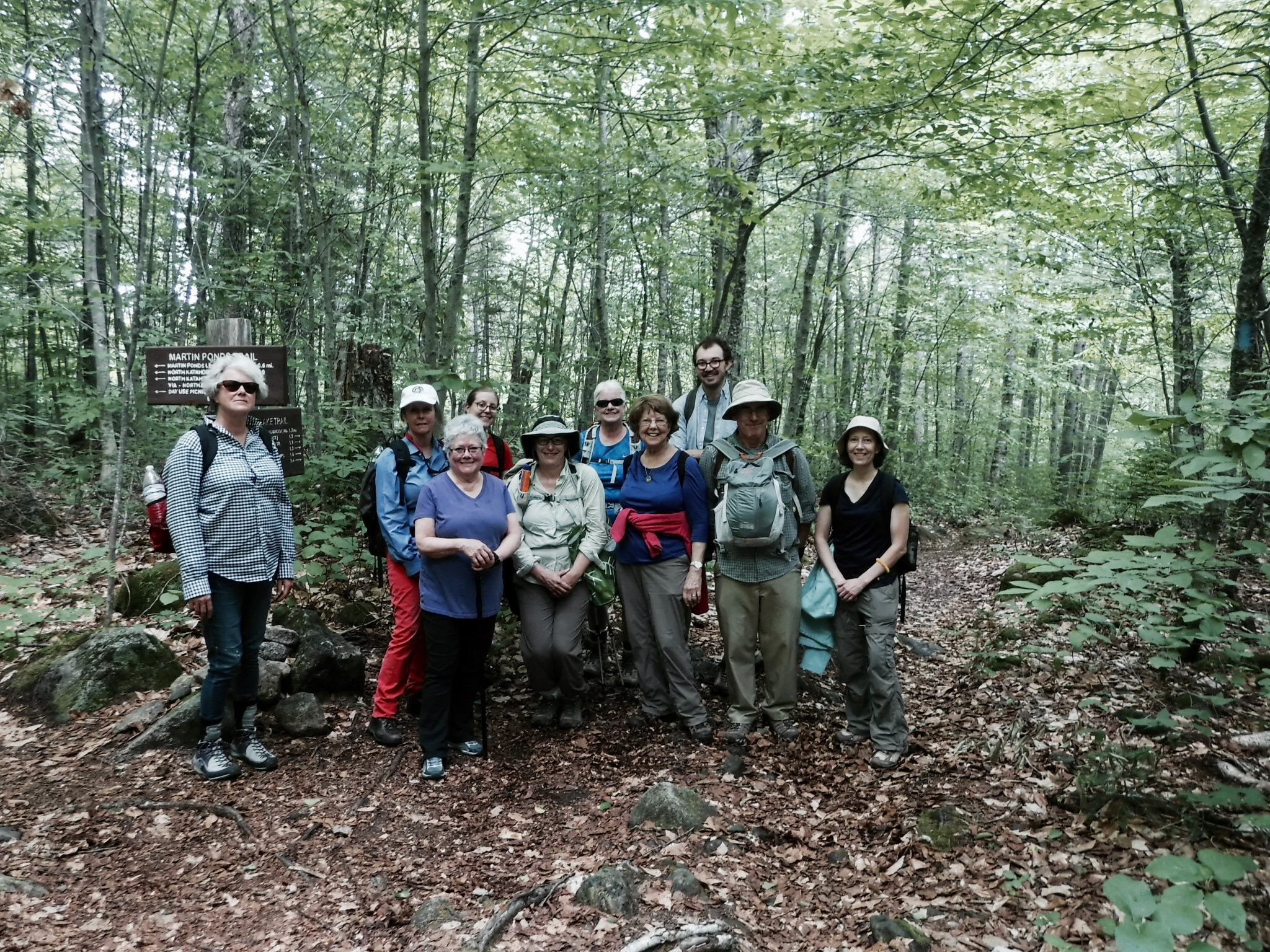As part of the Art and Land Conservation Symposium portion of the Appalachian Trail 2017 Conference at Colby College in Maine, a number of field trips were offered for symposium participants. Deb Carroll, Maine Appalachian Trail Land Trust volunteer, has contributed a trip report on an outing she led to Katahdin for a two-day art history expedition into the world of Frederic Church. Church traveled the world but so loved the Katahdin area that he built his summer camps there on Millinocket Lake. His camps were a base from which he worked. The last of his studio works, Katahdin from Millinocket Lake (1895), is perhaps the most well-known of his Millinocket Lake pieces. Church would also paint at other vantage points in the region, most famously perhaps at the remote and beautiful Katahdin Lake. Many other artists followed Church to Katahdin Lake, including Marsden Hartley. Today, Katahdin Lake is part of Baxter State Park and is still visited by working artists.
By Deborah Carroll
We met on August 5, 2017, just a few miles outside of the southern gate of Baxter State Park, to begin a 2-day adventure through art history.
Frederic Church was an American landscape painter who built a summer camp on Millinocket Lake. During the morning hours, we were given a tour of Church’s property, which still bears many artifacts from that age including furnishings, the original structure with its vertical log wall (though it’s been renovated to some degree), and a marvelous stone fireplace with a mosaic that was thought to depict Church’s beloved canoe, but which I thought resembled a sailboat. And they gave us cookies!
By 1:00 our group of 11 artists and art historians were shouldering out backpacks for the 3.5 mile walk to Katahdin Lake Wilderness Camps, a frequent haunt of Frederic Church and his large entourage of artists and friends.
Katahdin Lake Wilderness Camps is perched on the shore of Katahdin Lake and affords one both a sandy beach and spectacular views stretching from Pamola to Hamlin Peak and beyond.
The Camp also features wonderful home cooked meals prepared by Holly and her crew, as well as comfortable cabins and bunks (complete with pounding rain on the roof and lightning during our visit), and fish that bite your toes when you dangle them in the water off the dock (which seriously cracked us up – and what’s a MATLT adventure without something seriously cracking us up?). (Editor’s note: Gross!)
Our group was co-led by Maine watercolorist Evelyn Dunphy, who introduced us to individuals who were well versed in the rich story of Church’s activities in the area. Dunphy also entertained us with stories and her own insights regarding Church era exploits. Speaking only for myself, I was left richer for the experience. I believe that sentiment was shared by all.
Saturday afternoon, and briefly Sunday morning, found us swimming, kayaking, sketching, and taking photographs by the lake.
The hike, a short “out and back,” was comfortable, with little elevation gain, and our group handled it nicely. As I walked, I thought about the artists who carried their tools with them through those woods and set up their easels on the shore and dock to create pieces that would then travel the world and positively impact the work of conservationists globally, and for years to come. This adventure was so much more than a walk in the woods, and yet it was, simply, just that as well.







